February 2012
February 29, 2012
This Is My Home
This Is My Home from Mark on Vimeo.
Many thanks to WU-vie filmmakers Mark Cersosimo & Kelsey Holtaway!
Posted By: Paul - Wed Feb 29, 2012 -
Comments (3)
Category: Reader Recommendation, Collectors
Urine Bread
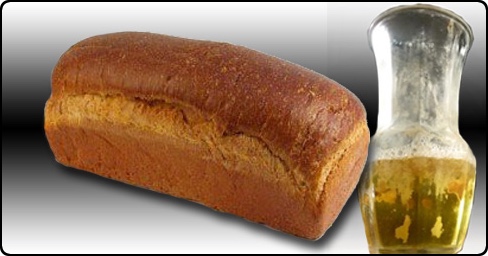
During the Second World War, prisoners held by the Japanese in an internment camp in Dutch Indonesia subsisted primarily on dry bread they made themselves in a camp bakery. But when their captors stopped supplying them with yeast, it became impossible to keep making the bread — until some of the inmates who were trained chemists figured out it was possible to use urine as a yeast substitute.
In the video above, Pieter Wiederhold, who was held in the camp as a boy with his father, discusses this urine bread. He gives a longer account of it in his book, The Soul Conquers:
The absence of bread was most disappointing. Some creating chemists in our camp got together to think about an alternative way to make yeast. After much discussion and some experimentation, they came up with a solution. They would make yeast using urine. When I heard about it I was surprised but not particularly disturbed. After all, I had eaten frogs and lizards that had been cooked in our soup and I had drunk filthy water from a toilet on the train. Why would it kill me if I ate bread that was made with yeast derived from urine? When he heard about it Father smiled. "As long as I have something to eat to stay alive," he said.
In order to provide the entire camp with bread, a large volume of urine was needed every day. A number of large drums were placed in several locations around the camp and each carried a sign:
"Do your Duty. Think of the yeast factory.
By 8:00 AM we must have at least two
full drums or there will be
no bread tomorrow."
Some internees were given the job of collecting the filled urine drums and replacing them with empty ones. They made the rounds using a two-wheeled cart with handlebars like the one I had used for my moving tasks in the women's camp. The drums were taken to the bread kitchen where they were put on large wood-burning firest to cook. Nitrogen had to be kept inside the urine, which was then transformed to ureum, which in turn converts to ammonia carbonate. The nitrogen was then removed. The resulting residue could be used as a substitute for yeast. The project was directed by someone who we called the "chief urinist."
The first time I received my allocated piece of this bread I was pleasantly surprised. It did not look much different from the way it was before, and bringing it to my nose I did not detect any unusual smell. It tasted OK, although we were so hungry that almost everything seemed palatable. The uniqueness soon wore off and no one gave it any further thought. The bread was baked in this manner throughout the rest of our internment in Cimahi.
In Life of Pee: The Story of How Urine Got Everywhere, author Sally Magnusson explains the chemistry:
Posted By: Alex - Wed Feb 29, 2012 -
Comments (7)
Category: Food, War, Body Fluids
February 28, 2012
Armored Coffee Receptacle
For the consumption of tactically sound coffee.
Posted By: Alex - Tue Feb 28, 2012 -
Comments (9)
Category:
My Excellent South American Adventure
Despite my daily posts last week, I was really among the missing. I spent from the 20th to the 27th (counting travel time) in Medellin, Colombia, being a guest speaker at this conference.But now I'm home, and have read all the posts and comments from the past week, and just want to say a big thanks to Alex and Chuck and all the witty, talented WU-vies who make this site so wonderful.
Here are two fotos from my trip.
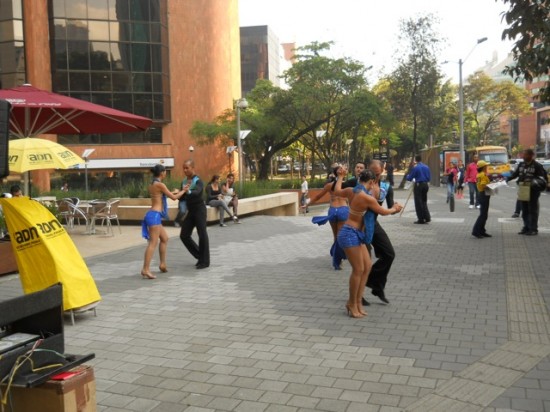
Salsa dancers working up a sweat to advertise something at EIGHT IN THE MORNING! I was ready to buy anything the ladies offered.
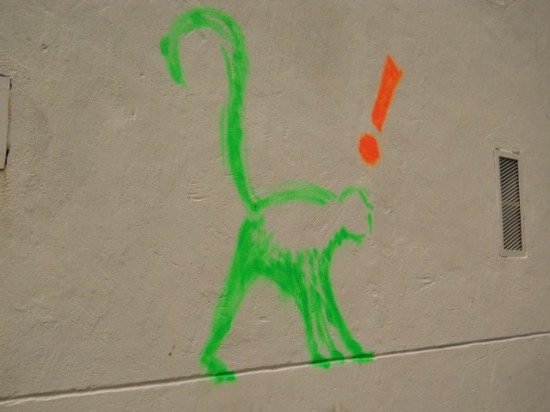
Strange grafitti. What revelation is the monkey experiencing?
Posted By: Paul - Tue Feb 28, 2012 -
Comments (8)
Category: Animals, Conventions, Advertising, Paul, Dance, South America
Guess Who These Guys Are
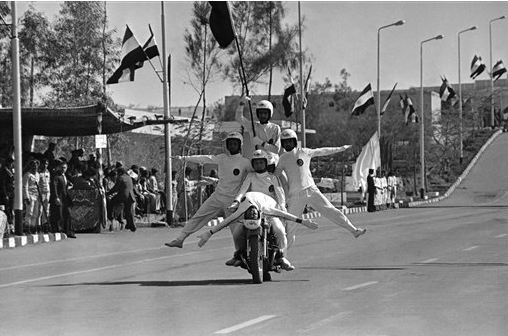
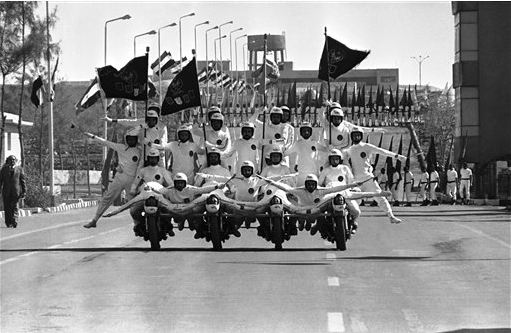
More in extended >>
Posted By: Alex - Tue Feb 28, 2012 -
Comments (4)
Category: Riots, Protests and Civil Disobedience, Synchronicity, Violence, Armed Forces
February 27, 2012
Johnson Smith Catalog Item #19

"Why, could that be Officer Clancy approaching me down this poorly lit sidewalk? Let me just whip out my pistol flashlight and-- Argh, I'm shot!"
From the 1950 catalog.
Posted By: Paul - Mon Feb 27, 2012 -
Comments (5)
Category: Johnson Smith Catalog, 1950s, Weapons
The School of Weird Facts
Back in 1989, Coppin State College in Baltimore started a program designed to teach kids critical thinking skills -- how to "formulate meaningful questions, identify pertinent data and determine fallacies and biases." It did this by having the kids examine and discuss "weird facts" and weird news stories. Perhaps Chuck's work was on the curriculum. (link: Google News)The picture shows teacher Tom Payne teaching the kids some weird facts. I don't know what happened to the program. It doesn't seem to exist anymore. In its place, we should try to make Weird Universe mandatory reading in all high schools.
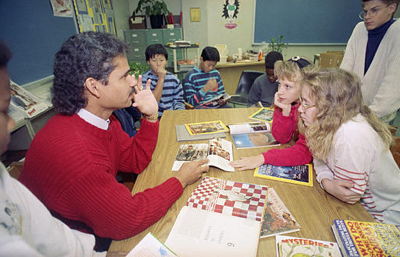
Posted By: Alex - Mon Feb 27, 2012 -
Comments (3)
Category: School
Chuck’s Weekly Cite-Seeing (February 27, 2012)
Chuck's Weekly Cite-Seeing TourThe Crème de la Crème, Every Monday
Hand-Picked and Lightly Seasoned by Chuck Shepherd
February 27, 2012
(datelines from February 17 or later) (links correct as of February 27)
Hong Kong: The Guizhentang pharmaceutical company is looking to expand (by 3x) the size of its bear-bile-farming operation. Bear bile is thought to be a magic curative for many illnesses (and according to the farmers, bears couldn't be prouder to give it up) (sedated) (with long-ass syringes). New York Times
San Francisco: The state Administrative Office of the Courts is collecting demographic data on all judges in the state, to encourage diversity in the selection of 50 new ones. (But they can't ask about "sexual orientation," can they?) (Yes.) The Weekly Standard
Columbia Heights, Minn.: A cop noticed that Eric King, 21, seemed to be shuffling along with the gait of someone 101 rather than 21. (It was that 19-inch TV in his pants, along with remote and power cords, from a shoplifting.) KSTP-TV (St. Paul)
Cayce, S.C.: I know how you and I can make some money! Let's scam an insurance company! Ummm, I'll handle the paperwork, and you . . your job is to let me chop off your hand, OK? WIS-TV (Columbia)
Wasilla, Alaska: Two local artists displayed their sculpture, "Warrior Within," at Wasilla High, but yanked it after three days. It's a pair of shields, surrounded by feathers, and according to people up in Palinville, it looks too much like a hoo-hah [image Completely Safe For Work]. Mat-su Valley Frontiersman (Wasilla)
More in extended >>
Posted By: Chuck - Mon Feb 27, 2012 -
Comments (6)
Category:
February 26, 2012
People Euthanizing Thousands (of) Animals
PETA documents show they euthanized 95% of the animals they take in. Good thing they like animals, or they'd kill 'em all.
Posted By: Alex - Sun Feb 26, 2012 -
Comments (6)
Category:
| Get WU Posts by Email | |
|---|---|

| Who We Are |
|---|
| Alex Boese Alex is the creator and curator of the Museum of Hoaxes. He's also the author of various weird, non-fiction books such as Elephants on Acid. Paul Di Filippo Paul has been paid to put weird ideas into fictional form for over thirty years, in his career as a noted science fiction writer. He has recently begun blogging on many curious topics with three fellow writers at The Inferior 4+1. Chuck Shepherd Chuck is the purveyor of News of the Weird, the syndicated column which for decades has set the gold-standard for reporting on oddities and the bizarre. Our banner was drawn by the legendary underground cartoonist Rick Altergott. Contact Us |

